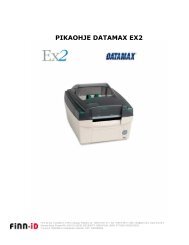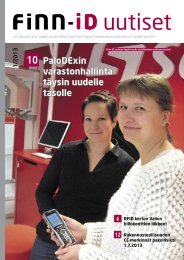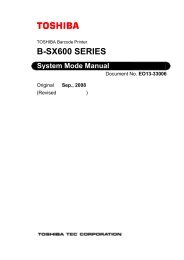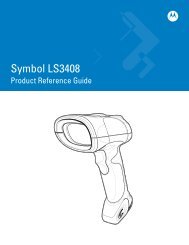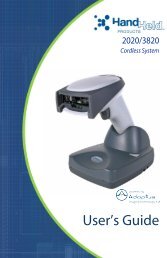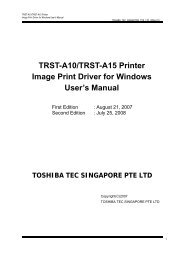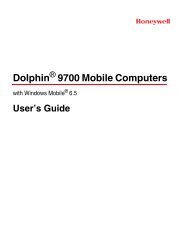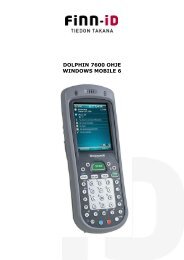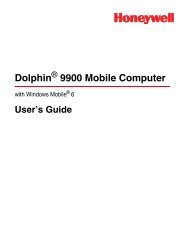INfinity 510 Protocol Reference Guide - Sirit
INfinity 510 Protocol Reference Guide - Sirit
INfinity 510 Protocol Reference Guide - Sirit
Create successful ePaper yourself
Turn your PDF publications into a flip-book with our unique Google optimized e-Paper software.
Chapter 4 - Reader Behavior<br />
Operating Mode<br />
NOTE<br />
Data fields displayed in<br />
an event.tag.report<br />
event may include some<br />
or all fields requested by<br />
any of the following<br />
variables:<br />
tag.reporting.report_field,<br />
tag.reporting.arrive_field,<br />
tag.reporting.depart_field,<br />
tag.reporting.taglist_field.<br />
Any software receiving<br />
this event should ignore<br />
those fields not needed<br />
for event handling.<br />
In the ETSI region, there are also four different sub-regions. The first setting<br />
(EN300220) is for operation complying with the EN300220 standard which<br />
uses a transmit frequency of 869.525 MHz. The other three settings<br />
(EN302208_NO_LBT, EN302208, EN302208_DENSE) provide operation<br />
that complies with variations on the EN302208 standard. You must ensure<br />
that the specific sub-region setting is allowed in the local regulatory region.<br />
EN302208_NO_LBT – Utilizes the standard frequency band of 865 to<br />
868MHz with 200 KHz channelization but does not perform the listen<br />
before talk (LBT) function prior to transmitting on a frequency. This<br />
mode can only be used in select countries of the EU.<br />
EN302208 – Utilizes the standard frequency band of 865-868MHz with<br />
200 KHz channelization and provides support for all aspects of the<br />
standard. This mode can only be used in select countries of the EU.<br />
EN302208_DENSE – Utilizes the standard frequency band of 865 to<br />
868 MHz but with 600 KHz channelization and performs the LBT<br />
function prior to transmitting on a frequency. This mode can only be<br />
used in select countries of the EU.<br />
The setup.operating_mode variable controls the operational mode of<br />
the reader. There are four operational modes for the reader: active,<br />
standby, autonomous, and polled.<br />
active – Reader is continuously attempting to singulate tags, stores<br />
singulated tags in the database and automatically reports any<br />
singulated tag via an asynchronous event. The host application can<br />
either register for these events or poll the tag database, or use any<br />
combination of these two methods. The "active" mode supercedes the<br />
previous autonomous and polled modes.<br />
standby –Reader is not transmitting any energy, unless processing a tag<br />
related command. The RF transmitter is enabled at the beginning of the<br />
command processing, any protocol operations required for the<br />
command are performed, and then the RF transmitter is turned back<br />
off. In this mode, a host application could scan the reader’s field of<br />
view for tags by performing the tag.db.scan_tags(1000)<br />
command where the parameter value of 1000 represents the amount<br />
of scan time, in milliseconds.<br />
autonomous – Superceded by active mode. Reader is continuously<br />
attempting to singulate tags and automatically reports any singulated<br />
tag via an asynchronous event notification on the event channel.<br />
polled – Superceded by active mode. Reader is continuously attempting<br />
to singulate tags.<br />
<strong>INfinity</strong> <strong>510</strong> <strong>Protocol</strong> <strong>Reference</strong> <strong>Guide</strong> 17



